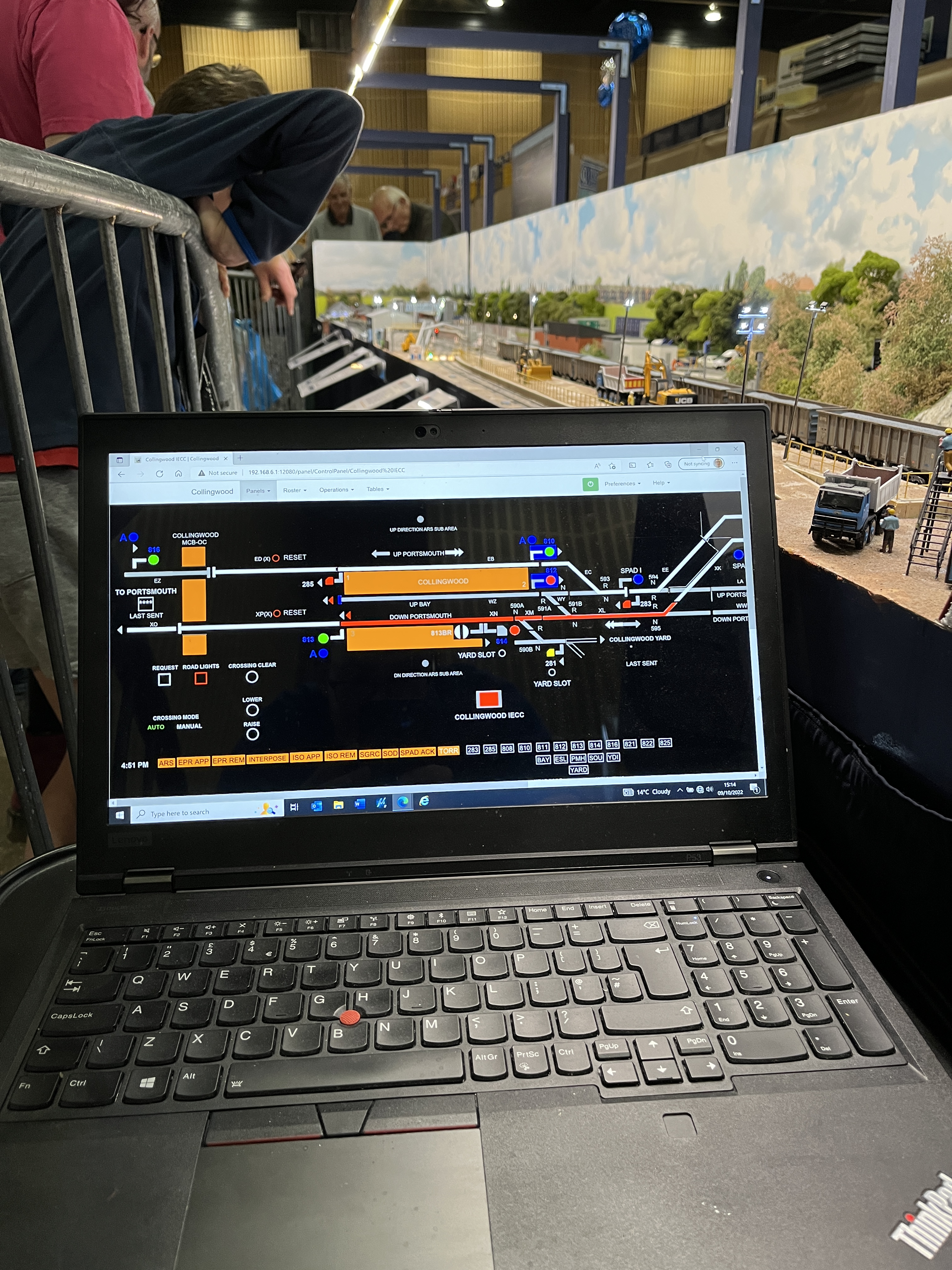This is the point at which most model railway ‘interlockings’ stop at, but in reality, the safe release of a route is just as, or even more, crucial as the safe setting of a route.
Originally, with mechanical interlockings, the release of the route was controlled by the signaller; once the signal was put back to danger at the discretion of the signaller (obviously based on the rules), there was nothing mechanically or electrically stopping the signaller immediately pulling point levers.
Unfortunately, signallers aren’t always fully reliable, so there have since been controls added to interlockings, including mechanical, to ensure that it is completely safe for a route to fully release before doing so.
Once the signaller requests a route release from the interlocking by cancelling the route (in my case a long click on the entrance signal button, but in reality, it would be via a drop down menu on an IECC and by pulling the entrance button on an NX Panel), the signal will return to danger straight away, but the route won’t immediately release as it will be ‘approach locked’.
Approach Locking is where the route is locked until it is proven that an approaching train is fully at a stand before the route is fully released, unless one of two things is proven:
- The train has entered the route;
- No train was approaching the signal to start with (known as Comprehensive Approach Locking)
The idea behind approach locking is that the route ahead is locked until we can prove train won’t enter it (and, if the route was released immediately, it won’t encounter any unlocked points or set opposing routes), as the train might have not seen the aspect change early enough to stop before the signal.
Comprehensive Approach Locking (CAL) isn’t used on all routes, it is provided at the request of operations rather than a standard. CAL checks whether a train is approaching the route, it does this by checking whether the previous signal had showed a proceed aspect up to the signal. CAL then checks all the track circuits between signal being checked and the previous signal to see whether they are occupied. Of course, a train may be somewhere between the previous signal and the signal being checked, but is being routed to a different signal, so some track circuits will have to be ‘conditioned’ out by the lie of points.

For instance, in the case of CD822, the Comprehensive Approach Locking must:
- Always check if ‘LA’ and ‘XK’ Track Circuits are unoccupied
- Check if ‘EE’ and ‘EC’ Track Circuits are unoccupied only if 594 points are ‘reverse’
- Check if ‘WY’ Track Circuit are unoccupied only if 591 points are ‘normal’
- If CD810 and CD812 signals have remained ‘ON’
If these checks are satisfied, then the approach locking can be removed.
If the signal was part of a four-aspect sequence, then the track circuit checks would extend back to the next signal on approach, the first caution signal, but only if the signal between it and the signal being checked was ‘OFF’.
If the CAL checks aren’t satisfied, or is not provided, then the only other way approach locking can be removed immediately upon a release being requested is through proving that a train has entered the route. This is carried out by the sequential operation of the first and second track circuits in the route, the sequential operation of the track circuits prevent a failure of a single-track circuit causing a premature route release.
If it can be proved that a train maybe be approaching the signal and hasn’t fully entered the route, the only way to release the approach locking is to prove the train has come to stand. Once again, this is done by a timer, however, this is a simple timer rather than based on berth track occupied. The timer can be 30, 120, 180 or 240 seconds depending on the type of signal (plain, terminal starting signal, junction etc.).
There is one problem with this setup, and this is that it relies on the signaller manually cancelling the route. Now, if the signaller doesn’t notice that the route requires cancelling, there could be undue delay as without cancelling a route, points etc remain locked and other routes can’t be set.
To overcome this problem, Train Operated Route Release (TORR) can be fitted. This is basically where the progress of a train through the route is ‘tracked’ by the interlocking and once the interlocking is happy that a train has fully entered the route, then the interlocking itself can request a route release. This is done by sequential operation of the second and third track circuits.
Once the approach locking has been removed, the routes are released, which starts the release of the section route locking behind a train, which in turn release the locking of points and allows other routes to be set.
That effectively covers how the interlocking that an VSCS controls works in terms of controlling routes and signals.

